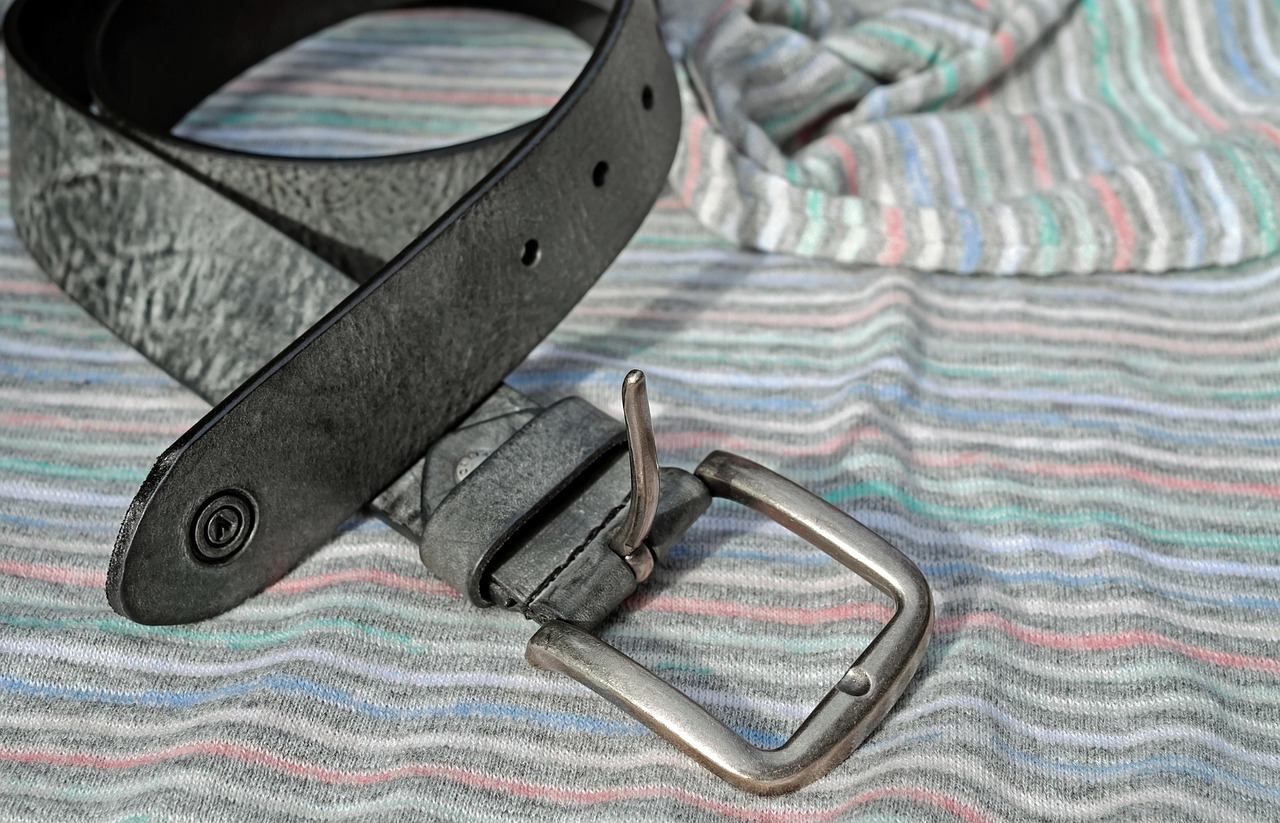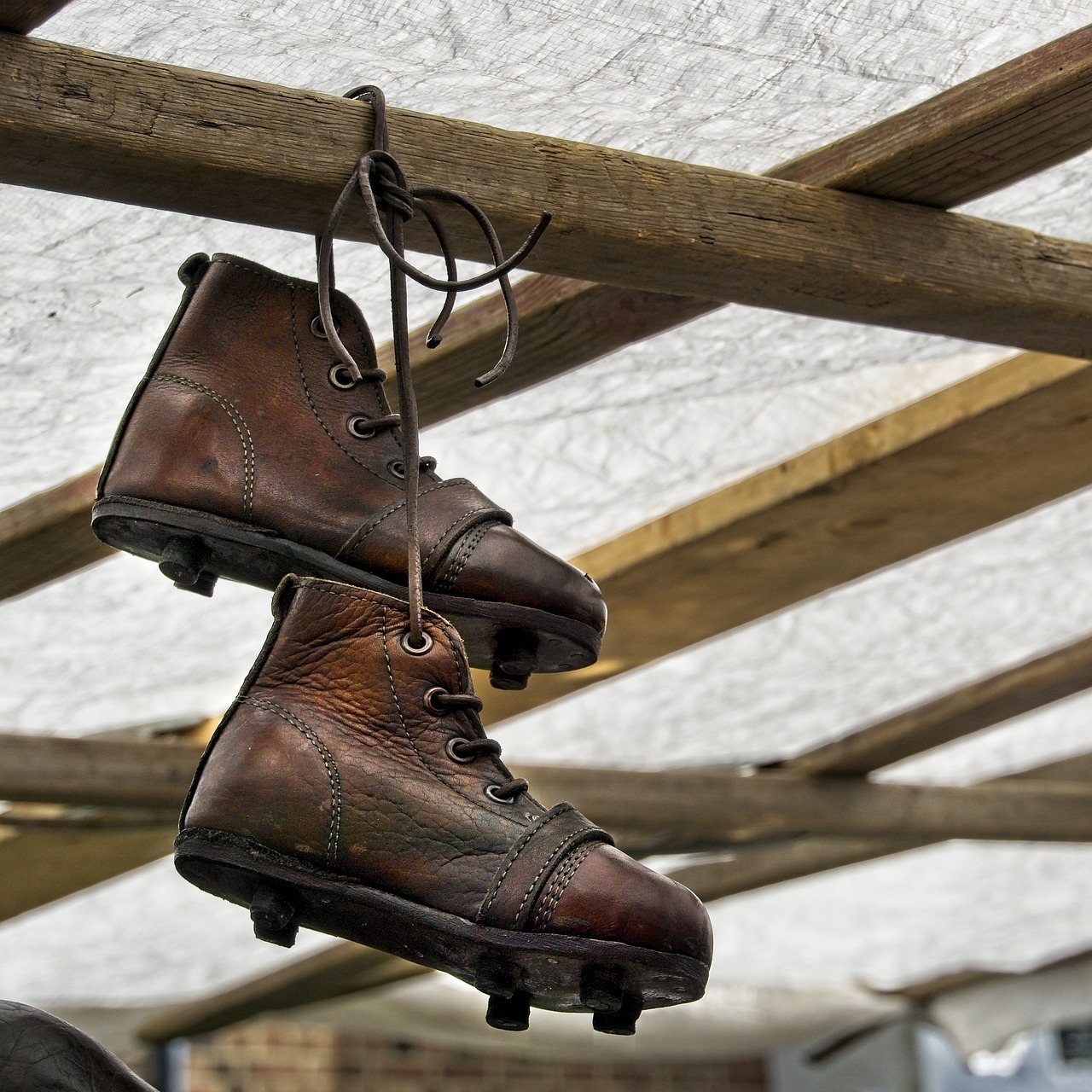Shipping a guitar can be a complex process influenced by a variety of factors. In this article, we will delve into the cost of shipping a guitar, discussing the different shipping options available, the necessary packaging requirements, and practical tips to ensure safe delivery.
The cost of shipping a guitar can fluctuate based on several key factors:
- Package Size: Larger packages often incur higher shipping fees.
- Weight: Heavier guitars will typically cost more to ship.
- Distance: Longer shipping distances generally lead to increased costs.
- Service Level: Expedited services will be more expensive compared to standard shipping options.
When it comes to shipping guitars, several reputable carriers can be considered:
- UPS: Known for reliable service and tracking options.
- FedEx: Offers fast delivery and various shipping choices.
- USPS: Often provides the most economical rates for smaller packages.
When selecting a shipping carrier, it’s important to weigh the pros and cons:
- USPS: Ideal for cost-effective shipping, especially for domestic deliveries.
- UPS: Often preferred for its tracking capabilities and reliability.
- FedEx: Best for expedited shipping needs and high-value items.
Proper packaging is crucial to protect your guitar during transit. Here are some essential tips:
- Use a sturdy guitar case for added protection.
- Wrap the guitar in bubble wrap to cushion it against shocks.
- Choose a well-fitted shipping box to minimize movement inside the package.
There are several strategies to help you save on shipping costs:
- Compare Quotes: Always check multiple carriers for the best rates.
- Utilize Flat-Rate Shipping: This can be economical for heavier items.
- Discounts: Look for shipping discounts offered by carriers.
Understanding the typical shipping costs can help you budget effectively:
- Domestic Shipping: Generally ranges from $30 to $75.
- International Shipping: Can vary from $75 to $200 or more, depending on the destination.
To ensure your guitar arrives in excellent condition, follow these best practices:
- Pack your guitar securely using protective materials.
- Label the package clearly to avoid misdelivery.
- Consider purchasing shipping insurance for valuable instruments.
Ensure you include the necessary labels and documentation, especially for international shipments. This may include:
- Customs Forms: Required for international shipping.
- Return Address: Always include a return address to facilitate returns if needed.

What Are the Factors Affecting Guitar Shipping Costs?
When considering the shipping costs for guitars, it is essential to recognize that these costs can fluctuate significantly based on a variety of factors. Understanding these elements can help you make informed decisions when preparing to ship your instrument.
Shipping costs for guitars can vary significantly based on several key factors:
- Package Size: The dimensions of the shipping box play a crucial role. Larger packages generally incur higher shipping fees due to increased dimensional weight.
- Weight: Heavier packages cost more to ship. Guitars, especially when packed with cases and protective materials, can add to the overall weight.
- Shipping Distance: The distance between the origin and destination affects costs. Shipping a guitar across the country will typically cost more than sending it locally.
- Service Level: Different shipping options, such as standard, expedited, or overnight services, come with varying price tags. Choosing a faster service will generally increase the shipping cost.
- Insurance: Adding shipping insurance for high-value guitars can lead to additional costs but provides peace of mind in case of damage or loss during transit.
- Carrier Choice: Different carriers offer varying rates and services. It’s important to compare options like UPS, FedEx, and USPS to find the best deal.
- Customs Fees: For international shipments, customs duties and taxes can significantly increase overall shipping costs. Understanding the regulations of the destination country is crucial.
Each of these factors can contribute to the overall expense of shipping a guitar. By carefully considering them, you can optimize your shipping strategy and potentially save money.
To effectively calculate the shipping costs for your guitar, follow these steps:
- Measure and Weigh: Accurately measure the dimensions and weight of your packaged guitar. This information is essential for obtaining quotes from shipping carriers.
- Choose Your Carrier: Research shipping carriers to compare rates and services. Each carrier may have different pricing structures based on the factors mentioned above.
- Get Quotes: Use the carrier’s website or visit a local branch to get shipping quotes based on your measurements and desired service level.
- Consider Additional Costs: Factor in any additional costs such as insurance, special handling, or customs fees for international shipments.
By following these steps, you can gain a clearer understanding of the potential shipping costs involved in sending your guitar.
To ensure your guitar arrives safely and securely, consider the following best practices:
- Use a Sturdy Case: Always pack your guitar in a hard case or a specially designed guitar shipping box for maximum protection.
- Protective Materials: Use bubble wrap or foam padding to cushion the guitar inside the case or box, minimizing movement during transit.
- Label Clearly: Ensure that the shipping label is clearly visible and includes all necessary information to avoid delays.
- Document Everything: Keep a record of shipping receipts and tracking information for reference.
By adhering to these practices, you can help ensure that your guitar reaches its destination in excellent condition.

What Are the Best Shipping Options for Guitars?
When it comes to shipping a guitar, selecting the right carrier is crucial for ensuring your instrument arrives safely and on time. There are several reliable shipping options available for guitars, including major carriers like UPS, FedEx, and USPS. Each of these carriers offers various services that cater to different needs and budgets, making it essential to understand their offerings.
Shipping a guitar isn’t just about tossing it in a box and sending it off; it requires careful consideration of the available shipping options. Let’s explore the leading carriers:
- UPS: Known for its reliable service, UPS offers a variety of shipping options, including ground and expedited services. Their tracking system is robust, allowing you to monitor your shipment in real-time. UPS also provides insurance options, which is vital for high-value instruments.
- FedEx: FedEx is another popular choice, especially for those who need quick delivery. With options like FedEx Express, you can have your guitar shipped overnight or within a couple of days. FedEx also offers excellent tracking capabilities and packaging services to ensure your guitar is protected during transit.
- USPS: The United States Postal Service is often the most cost-effective option for shipping guitars, particularly for domestic shipments. USPS offers flat-rate shipping, which can be beneficial if you’re shipping multiple guitars or larger packages. Additionally, their Priority Mail service includes tracking and insurance, providing peace of mind for shippers.
Each of these carriers has its own strengths and weaknesses. For example, while USPS may be less expensive, UPS and FedEx often provide faster shipping options and superior tracking services. Thus, the best choice depends on your specific needs, such as delivery speed, budget, and the value of the guitar being shipped.
When comparing USPS to UPS and FedEx, it’s important to consider several factors:
- Cost: USPS typically offers lower rates for smaller packages, making it an attractive option for budget-conscious shippers.
- Delivery Speed: If time is of the essence, UPS and FedEx often provide faster delivery options, especially for urgent shipments.
- Reliability: All three carriers are generally reliable, but UPS and FedEx have established reputations for handling high-value items with care.
Regardless of the carrier you choose, proper packaging is essential. Here are some tips:
- Use a sturdy case: A hard case is ideal for protecting your guitar from impact.
- Bubble wrap: Wrap the guitar in bubble wrap to cushion it against shocks and vibrations.
- Shipping box: Choose a well-fitted shipping box to prevent movement during transit.
By selecting the right shipping option and properly packaging your guitar, you can ensure a safe and secure delivery experience.
How Does USPS Compare to UPS and FedEx?
When it comes to shipping your guitar, selecting the right carrier can significantly impact your overall experience. USPS, UPS, and FedEx each bring unique advantages and drawbacks to the table. Understanding how these carriers compare in terms of cost, delivery speed, and reliability is crucial for making an informed decision.
One of the primary considerations when choosing a shipping carrier is the cost. Each carrier has different pricing structures that can affect your budget:
- USPS: Generally offers lower rates for smaller packages, making it a popular choice for shipping guitars domestically. Their flat-rate shipping options can be particularly cost-effective.
- UPS: Known for its reliable service, UPS may charge higher rates, especially for expedited shipping. However, they often provide discounts for business accounts.
- FedEx: Similar to UPS, FedEx offers a range of services, including overnight shipping, which can be pricier but ensures quick delivery.
Delivery speed is another critical factor. Depending on the urgency of your shipment, you may prefer one carrier over the others:
- USPS: While USPS can be slower for certain services, their Priority Mail often delivers within 1-3 days, making it a viable option for time-sensitive shipments.
- UPS: UPS is renowned for its speedy delivery, especially for next-day and two-day services. Their extensive network ensures timely arrivals.
- FedEx: FedEx is synonymous with express shipping, offering overnight delivery options that are perfect for urgent needs.
Reliability is paramount, especially when shipping valuable items like guitars. Here’s how each carrier stacks up:
- USPS: Generally reliable, but packages can occasionally be delayed, especially during peak seasons.
- UPS: Known for its dependable service and comprehensive tracking options, UPS is often regarded as one of the most reliable carriers.
- FedEx: With a strong reputation for on-time delivery, FedEx also provides excellent tracking capabilities, ensuring you can monitor your shipment’s progress.
When deciding between USPS, UPS, and FedEx, consider the following:
- Package Size and Weight: Heavier or larger guitars may incur higher shipping costs with certain carriers.
- Insurance Options: Assess the insurance policies offered by each carrier to protect your valuable instrument during transit.
- Customer Service: Reliable customer service can make a difference if issues arise during shipping. Look for carriers known for their support.
Ultimately, the best carrier for your guitar shipping needs will depend on your specific requirements, including budget, urgency, and the value of the instrument. By comparing USPS, UPS, and FedEx based on these factors, you can make a well-informed decision that ensures your guitar arrives safely and on time.
What Are the Advantages of Using USPS?
When it comes to shipping guitars, choosing the right carrier can significantly impact both the cost and the safety of your instrument. Among the various shipping options available, USPS stands out for its unique advantages, particularly for domestic shipments. Below, we explore the key benefits of using USPS for shipping guitars.
One of the most appealing aspects of USPS is its competitive pricing for smaller packages. Guitars, especially when packaged properly, can often fall within the weight and size limits that qualify for lower shipping rates. This makes USPS an attractive option for individuals and businesses looking to save on shipping costs.
USPS offers flat-rate shipping options that allow you to ship items at a fixed price, regardless of weight (as long as it fits within the designated box). This can be particularly beneficial for shipping guitars, as it provides a predictable cost structure. For example, if you choose a Priority Mail Flat Rate Box, you can ship your guitar without worrying about the weight, as long as it fits securely in the box.
USPS is known for its reliable delivery times, especially with its Priority Mail service, which typically offers delivery within 1-3 business days. This speed is crucial for those who need to send guitars quickly, whether for a sale or a performance. The reliability of USPS can provide peace of mind, knowing that your instrument will reach its destination promptly.
With numerous post offices and drop-off locations across the country, USPS provides convenience for shipping. This accessibility allows you to easily send your guitar without the need to travel far. Additionally, many locations offer extended hours, making it easier to ship your instrument at a time that suits you.
USPS offers tracking services that allow you to monitor your shipment’s progress at every stage. This feature is particularly important when shipping valuable items like guitars. Moreover, you can purchase shipping insurance to protect your instrument in case of loss or damage during transit, providing an additional layer of security.
USPS is committed to sustainability and offers eco-friendly shipping options. By choosing USPS, you are supporting a carrier that prioritizes reducing its carbon footprint, which can be an essential consideration for environmentally conscious shippers.
In summary, USPS presents a range of advantages for shipping guitars domestically. With competitive rates, flat-rate shipping options, reliable delivery, convenient drop-off locations, tracking capabilities, and environmentally friendly practices, it is a strong contender for anyone looking to ship their beloved instrument. Whether you are sending a guitar to a friend or selling it online, USPS can provide a cost-effective and efficient solution.
Why Choose UPS or FedEx for Guitar Shipping?
When it comes to shipping guitars, choosing the right carrier can significantly impact both the cost and safety of your instrument. Among the leading options, UPS and FedEx stand out for their reliable services. These carriers offer a range of benefits that can be particularly advantageous for shipping high-value guitars or for time-sensitive deliveries.
- Faster Shipping Options: Both UPS and FedEx provide expedited shipping services that can deliver your guitar within one to three business days, depending on the distance. This is especially important if you’re shipping to a customer or a venue that requires the instrument by a specific date.
- Advanced Tracking Services: One of the standout features of UPS and FedEx is their sophisticated tracking systems. Customers can monitor their shipments in real-time, receiving updates at every stage of the delivery process. This level of transparency is crucial for high-value guitars, as it allows senders and recipients to stay informed and reassured.
- Insurance Options: Both carriers offer shipping insurance, which can be vital for protecting your investment. High-value guitars can be costly to replace, and having the option to insure your shipment provides peace of mind in case of loss or damage.
- Specialized Services: UPS and FedEx also offer specialized services tailored for fragile items. Their handling procedures are designed to minimize the risk of damage, ensuring that your guitar arrives in pristine condition.
While USPS can be a cost-effective option for smaller packages, it often lacks the speed and tracking capabilities that UPS and FedEx provide. For instance, if you are shipping a guitar that is worth a significant amount, the added expense of using UPS or FedEx may be justified by the enhanced security and reliability.
When deciding between UPS and FedEx, consider the following factors:
- Delivery Speed: Assess how quickly you need the guitar to arrive. If time is of the essence, opting for a faster service from either carrier may be necessary.
- Cost: Compare shipping quotes from both carriers. Depending on the weight and dimensions of your package, one may be more cost-effective than the other.
- Customer Service: Research customer reviews and experiences with each carrier. Reliable customer service can be invaluable, especially if issues arise during shipping.
To maximize the benefits of shipping with UPS or FedEx, follow these best practices:
- Proper Packaging: Use a sturdy guitar case and additional padding materials such as bubble wrap to protect the instrument during transit.
- Labeling: Clearly label your package with both the sender’s and recipient’s information, and include any necessary documentation for international shipments.
- Insurance: Consider purchasing shipping insurance for high-value guitars to ensure financial protection in case of mishaps.
In conclusion, selecting UPS or FedEx for your guitar shipping needs offers numerous advantages, particularly for high-value or time-sensitive deliveries. Their faster shipping options, superior tracking services, and specialized handling make them an excellent choice for ensuring your instrument arrives safely and promptly.
What Should You Consider When Packaging a Guitar for Shipping?
When it comes to shipping a guitar, proper packaging is absolutely essential to ensure that your instrument arrives at its destination in perfect condition. A guitar is not just a musical instrument; it is often a significant investment and a cherished possession. Therefore, taking the time to package it correctly can save you from potential heartbreak and financial loss.
Guitars are delicate instruments that can easily be damaged during transit if not packaged properly. Factors such as temperature fluctuations, humidity levels, and physical impacts can all affect the integrity of the instrument. By using the right materials and methods, you can significantly reduce the risk of damage.
- Specialized Guitar Shipping Boxes: These boxes are designed specifically for guitars and provide an optimal fit, reducing movement during shipping.
- Bubble Wrap: Wrapping your guitar in bubble wrap adds a layer of cushioning that can absorb shocks and impacts.
- Foam Inserts: If available, foam inserts can be used to secure the guitar within the box, preventing it from shifting.
- Packing Tape: Use high-quality packing tape to seal the box securely and prevent it from opening during transit.
Before packing your guitar, it’s important to prepare it properly:
- Loosen the Strings: Loosening the strings can relieve tension on the neck and body of the guitar, reducing the risk of damage.
- Clean the Guitar: Wipe down the guitar to remove any dust or oils that may cause damage during shipping.
- Remove Accessories: Take off any detachable parts such as straps, picks, or pedals to avoid potential damage.
Follow these steps to ensure your guitar is packed securely:
1. Wrap the guitar in bubble wrap, focusing on the neck and body.2. Place the wrapped guitar in a specialized shipping box, ensuring a snug fit.3. Fill any gaps with packing peanuts or crumpled paper to prevent movement.4. Seal the box with packing tape, ensuring all openings are secure.5. Label the box as "Fragile" to alert handlers to the delicate contents inside.
There are several common mistakes to avoid:
- Using Inadequate Materials: Avoid using weak boxes or insufficient cushioning, as they will not provide adequate protection.
- Neglecting to Label: Failing to label the package can lead to mishandling during transit.
- Overpacking: While it’s important to secure the guitar, overpacking can lead to additional pressure on the instrument.
Investing time and effort into proper packaging can offer numerous benefits:
- Peace of Mind: Knowing that your guitar is well-protected can alleviate anxiety during shipping.
- Cost Savings: Preventing damage means avoiding costly repairs or replacements.
- Enhanced Reputation: If you’re a seller, delivering a guitar in excellent condition can enhance your reputation and lead to positive reviews.
In conclusion, proper packaging is vital to ensure your guitar arrives safely. By using specialized guitar shipping boxes and protective materials, you can minimize the risk of damage significantly. Taking the time to package your guitar correctly not only protects your investment but also ensures a smooth shipping experience.

How Can You Save Money on Guitar Shipping?
Shipping a guitar can be a significant expense, especially if you’re doing it frequently. Fortunately, there are several effective strategies to reduce shipping costs without compromising the safety of your instrument. Below, we explore various methods to help you save money on guitar shipping.
- Compare Shipping Quotes: Always start by comparing quotes from different carriers. Major shipping companies like UPS, FedEx, and USPS often have varying rates for the same service. Use online comparison tools to find the best deal for your specific needs.
- Utilize Flat-Rate Shipping: Many carriers offer flat-rate shipping options, which can be particularly beneficial if you are shipping multiple guitars or larger packages. This pricing model allows you to predict costs more accurately and can sometimes be cheaper than standard rates.
- Take Advantage of Discounts: Shipping carriers frequently provide discounts for frequent shippers, businesses, or members of loyalty programs. Signing up for these programs can lead to significant savings over time. Always inquire about any available discounts before finalizing your shipment.
- Optimize Packaging: Proper packaging not only protects your guitar but can also reduce shipping costs. Using lightweight yet sturdy materials can help keep the overall weight down, which is a major factor in shipping fees. Consider using a guitar-specific shipping box to ensure maximum protection.
- Consider Insurance Wisely: While shipping insurance adds to the overall cost, it can save you money in the long run if your guitar is lost or damaged. Evaluate the value of your instrument and decide whether the peace of mind is worth the additional expense.
- Plan Ahead: If possible, avoid last-minute shipping. Planning ahead can allow you to choose slower, more economical shipping options instead of expedited services that can significantly increase costs.
In addition to these strategies, it’s essential to stay informed about any changes in shipping rates or policies. Carriers may adjust their pricing structures, and being aware of these changes can help you adapt your shipping strategies accordingly.
Understanding the dynamics of shipping costs can empower you to make smarter decisions when sending your guitar. By implementing these strategies, you can ensure that you are not only saving money but also providing the best possible care for your instrument during transit.
Remember, the key to saving on shipping costs lies in being proactive—researching options, comparing prices, and utilizing available discounts can lead to substantial savings over time. Whether you are a professional musician or a casual player, these tips can help you manage your shipping expenses effectively.
What Are the Benefits of Buying Shipping Insurance?
When it comes to shipping valuable items, particularly musical instruments like guitars, the importance of shipping insurance cannot be overstated. This coverage serves as a safety net, protecting both the sender and the recipient against unforeseen circumstances that may arise during transit. In this section, we will explore the various benefits of purchasing shipping insurance, helping you understand why it is a wise investment.
Shipping insurance is particularly crucial for high-value items, such as guitars, which can be expensive and irreplaceable. Here are some key benefits:
- Financial Protection: In the event of loss or damage, shipping insurance can cover the full value of the guitar, ensuring that you are not left out of pocket.
- Peace of Mind: Knowing that your instrument is insured allows you to ship with confidence, alleviating the stress associated with potential risks.
- Comprehensive Coverage: Many insurance policies cover a wide range of incidents, from theft to natural disasters, providing a robust safety net.
Purchasing shipping insurance is typically straightforward. Here’s how it works:
- Determine Value: Assess the value of your guitar, including any unique features or modifications that may affect its worth.
- Choose Coverage: Select an insurance policy that offers adequate coverage for your item’s value. This can often be done through the shipping carrier or a third-party insurer.
- File a Claim: If an incident occurs, you can file a claim with the insurance provider, providing necessary documentation such as shipping receipts and photographs of the damage.
The cost of shipping insurance varies based on the value of the item being shipped. Generally, it is a small percentage of the total value, making it an affordable option for protecting your investment. For example, insuring a $1,000 guitar might cost around $20 to $30, depending on the insurer and the shipping method.
When selecting a shipping insurance policy, consider the following factors:
- Coverage Limits: Ensure that the policy covers the full value of your guitar.
- Exclusions: Be aware of any exclusions that may apply, such as specific types of damage or loss.
- Claims Process: Look for a provider with a straightforward claims process to make it easier to receive compensation if needed.
In summary, investing in shipping insurance is a prudent decision for anyone looking to ship high-value items like guitars. The financial protection, peace of mind, and comprehensive coverage it provides far outweigh the minimal costs involved. By understanding the benefits and ensuring you choose the right policy, you can confidently ship your guitar, knowing it is well-protected against potential risks.
Are There Any Discounts for Shipping Guitars?
When it comes to shipping guitars, costs can quickly add up, especially for frequent shippers or businesses that regularly send instruments. Fortunately, many shipping carriers offer discounts that can significantly reduce these expenses. In this section, we will explore the various ways to save on shipping costs, particularly through bulk shipping and membership programs.
Many shipping companies provide bulk shipping discounts to customers who send multiple packages at once. This is particularly beneficial for businesses that ship guitars regularly, as it allows them to take advantage of lower rates. By consolidating shipments, businesses can not only save money but also streamline their shipping processes.
Several carriers offer membership programs that come with exclusive discounts. For example, companies like UPS and FedEx have loyalty programs that reward frequent users with reduced rates. These programs often include perks such as:
- Discounted shipping rates
- Free shipping supplies
- Priority customer service
Signing up for these programs can lead to significant savings over time, especially for businesses that ship guitars frequently.
For larger businesses or those with high shipping volumes, it may be possible to negotiate custom shipping rates with carriers. Many companies are willing to offer personalized pricing structures based on the volume and frequency of shipments. This can lead to even greater savings, making it worthwhile for businesses to explore this option.
Another way to access discounts is through online shipping platforms that aggregate rates from multiple carriers. These platforms often provide competitive pricing and can help users find the best deals for shipping guitars. By comparing rates side by side, shippers can make informed decisions and choose the most cost-effective option.
Many carriers run seasonal promotions that can further reduce shipping costs. Keeping an eye out for these deals can be advantageous, particularly during busy shipping seasons like the holidays. Subscribing to newsletters or following carriers on social media can help shippers stay informed about any upcoming discounts.
In summary, there are numerous ways to save on guitar shipping costs through bulk discounts, membership programs, and strategic negotiations with carriers. By leveraging these options, businesses and frequent shippers can significantly reduce their shipping expenses, ensuring that their instruments reach their destinations safely and affordably.

What Are the Estimated Costs for Shipping a Guitar?
When considering the logistics of shipping a guitar, it is essential to have a clear understanding of the estimated costs involved. This knowledge not only helps you budget effectively but also ensures that you select the most suitable shipping option for your needs. The costs associated with shipping a guitar can vary widely based on several factors, including distance, shipping method, and the carrier you choose.
The average shipping costs for guitars generally range from $30 to $150. However, this range can fluctuate depending on various factors:
- Package Size and Weight: Larger and heavier packages typically incur higher shipping fees.
- Shipping Distance: Costs increase with longer distances; shipping within the same state is often cheaper than cross-country or international shipping.
- Carrier Choice: Different carriers have varying pricing structures, often influenced by their service level and delivery speed.
For domestic shipping, prices can vary significantly. Generally, you can expect to pay between $30 and $75 for standard shipping options. Here are some factors that may influence your domestic shipping costs:
- Service Level: Expedited shipping options will cost more than standard ground services.
- Packaging: Using a proper guitar shipping box can help avoid additional fees due to oversized packages.
International shipping can be more complex and costly. Prices typically range from $75 to $200 or more, depending on the destination and any applicable customs regulations. Key considerations include:
- Customs Duties: Be aware that the destination country may impose additional fees upon arrival.
- Shipping Insurance: For high-value guitars, investing in insurance can add to the overall cost but provides essential protection.
To minimize shipping expenses while ensuring safe delivery, consider the following tips:
- Compare Quotes: Always compare prices from different carriers to find the best deal.
- Use Flat-Rate Options: Some carriers offer flat-rate shipping, which can be beneficial for heavier items like guitars.
- Join Membership Programs: Frequent shippers may benefit from discounts available through membership programs offered by various carriers.
Investing in shipping insurance is a wise decision, especially for valuable instruments. This can provide peace of mind and financial protection in case of loss or damage during transit. The cost of shipping insurance is usually a small percentage of the declared value of the guitar, making it a cost-effective option for safeguarding your investment.
In conclusion, understanding the estimated costs for shipping a guitar is crucial for anyone looking to send their instrument safely and efficiently. By considering factors such as distance, carrier, and service level, you can make informed decisions that fit your budget and ensure your guitar arrives in perfect condition.
How Much Does It Cost to Ship a Guitar Domestically?
When it comes to shipping a guitar domestically, understanding the costs involved is essential for both sellers and buyers. Various factors can influence these costs, from the shipping distance to the service level you choose. In this section, we will delve into the specifics of domestic shipping costs for guitars, helping you make informed decisions.
Domestic shipping costs for guitars typically range from $30 to $75 for standard shipping options. However, this price can fluctuate based on several factors:
- Distance: The farther the destination, the higher the shipping costs are likely to be.
- Package Weight: Heavier packages incur higher shipping fees. Guitars, especially those packaged with additional protective materials, can increase the weight.
- Shipping Carrier: Different carriers, such as UPS, FedEx, and USPS, offer various rates and services that can affect the final cost.
- Service Level: Expedited shipping options will typically cost more than standard ground shipping.
When shipping a guitar, it’s crucial to compare rates among major carriers:
- USPS: Often provides competitive rates for smaller packages and offers flat-rate shipping options, making it an attractive choice for many.
- UPS: Generally known for reliable tracking and delivery speed, but may charge higher rates for expedited services.
- FedEx: Similar to UPS, FedEx offers a range of services that can cater to urgent shipping needs but may also come with a premium price tag.
To minimize shipping expenses, consider the following strategies:
- Compare Quotes: Use online tools to compare shipping rates from different carriers.
- Utilize Flat-Rate Shipping: If your guitar fits within the dimensions, flat-rate boxes can be a cost-effective option.
- Look for Discounts: Many carriers offer discounts for bulk shipping or through membership programs, which can significantly lower costs.
In addition to standard shipping fees, there are other costs that you may need to factor in:
- Packaging Costs: Investing in quality packing materials, such as bubble wrap and sturdy boxes, can prevent damage and potentially save money in the long run.
- Insurance: For high-value guitars, purchasing shipping insurance can provide peace of mind and financial protection in case of loss or damage during transit.
Proper packaging is vital to ensure your guitar arrives safely. Here are some tips:
- Use a Hard Case: If possible, place your guitar in a hard case before packing it.
- Bubble Wrap: Wrap your guitar in bubble wrap for added protection against impacts.
- Label Clearly: Ensure your shipping label is clear and includes all necessary information to avoid delays.
By understanding the factors that influence shipping costs and taking proactive steps to save money, you can ensure that your guitar is shipped safely and affordably. Whether you’re a seller or a buyer, being informed about these aspects will lead to a smoother transaction.
What Are the Costs for International Guitar Shipping?
When it comes to shipping a guitar internationally, the costs can vary widely based on several important factors. Understanding these costs and what influences them is essential for anyone looking to send their beloved instrument across borders. In this section, we will delve into the various elements that affect international shipping costs for guitars, providing you with a comprehensive overview.
International shipping can be significantly more expensive than domestic shipping, often ranging from $75 to $200 or more. This variation is influenced by several factors:
- Destination: The location to which you are shipping plays a critical role. Shipping to remote areas or countries with less established postal systems may incur higher costs.
- Package Weight and Dimensions: Heavier and larger packages typically cost more to ship. Guitars, especially when packed with protective materials, can add to the overall weight.
- Customs Regulations: Different countries have varying customs fees and regulations, which can add to the overall shipping cost. Be sure to check the specific requirements for the destination country.
- Shipping Carrier: Different carriers such as UPS, FedEx, and DHL offer various pricing structures and services, affecting the overall cost.
- Service Level: Expedited shipping options tend to be more expensive than standard shipping, so consider how quickly you need the guitar to arrive.
Customs fees can significantly influence the total cost of shipping a guitar internationally. These fees are typically based on the value of the instrument and the specific regulations of the destination country. It is advisable to declare the value accurately and check with the carrier for any additional customs charges that may apply.
Choosing the right shipping carrier is crucial for ensuring a smooth shipping experience. Here are some popular options:
| Carrier | Estimated Cost Range | Delivery Time |
|---|---|---|
| UPS | $100 – $250 | 2-5 business days |
| FedEx | $120 – $300 | 1-3 business days |
| DHL | $90 – $230 | 3-7 business days |
To save money on international shipping, consider the following strategies:
- Compare Quotes: Always compare shipping rates from different carriers to find the most economical option.
- Use Flat-Rate Shipping: Some carriers offer flat-rate options that can be more affordable for heavier packages.
- Take Advantage of Discounts: Look for bulk shipping discounts or membership programs that can lower costs.
Proper packaging is vital for international shipments. Use a sturdy case, ample padding, and a well-fitted shipping box to protect your guitar during transit. Additionally, consider purchasing shipping insurance for added peace of mind, especially for high-value instruments.
In summary, international shipping for guitars can be a complex process influenced by various factors including destination, weight, customs regulations, and carrier choice. By understanding these elements and planning accordingly, you can navigate the challenges of international shipping and ensure your guitar arrives safely at its destination.

What Are the Best Practices for Shipping a Guitar Safely?
Shipping a guitar safely requires careful attention to detail, ensuring that your instrument arrives in perfect condition. Whether you are sending it to a buyer, a friend, or for repairs, implementing best practices for packing, labeling, and selecting the right shipping method is crucial.
Proper packing is essential to protect your guitar from damage during transit. Here are some steps to follow:
- Use a Sturdy Case: Invest in a high-quality hard case specifically designed for your guitar model. This will provide the first line of defense against impact.
- Wrap the Neck: Use bubble wrap or foam padding to secure the neck of the guitar. This area is particularly vulnerable and should be cushioned to prevent breakage.
- Fill Empty Spaces: After placing the guitar in the case, fill any empty spaces with packing peanuts or additional bubble wrap to minimize movement.
- Seal the Case: Close the case securely and consider using additional tape to ensure it does not accidentally open during shipping.
Accurate labeling is vital for ensuring your guitar reaches its destination without delays. Follow these guidelines:
- Include Complete Address Information: Clearly write the recipient’s address, including their name, street address, city, state, and zip code. Double-check for accuracy.
- Use Fragile Labels: Mark the package as “Fragile” to alert handlers to take extra care. This can help prevent rough handling.
- Customs Documentation: If shipping internationally, ensure you complete the necessary customs forms. This includes declaring the value of the guitar and its purpose.
Choosing the right shipping method can greatly impact the safety and cost of shipping your guitar:
- Consider Insurance: Opt for a shipping service that offers insurance, especially for high-value guitars. This provides peace of mind in case of loss or damage.
- Track Your Shipment: Select a carrier that provides tracking options. This allows you to monitor the shipment’s progress and ensures accountability.
- Evaluate Shipping Speed: Depending on your urgency, you may choose expedited shipping options. However, this may come at a higher cost.
To minimize the risk of damage during shipping, consider the following:
- Use Double Boxing: Place the guitar case inside a larger shipping box with padding material between the case and the box. This adds an extra layer of protection.
- Avoid Extreme Temperatures: If possible, avoid shipping during extreme weather conditions, as temperature fluctuations can affect the wood and components of the guitar.
- Communicate with the Carrier: Inform the shipping carrier that you are sending a fragile item. They may provide additional guidance or services to ensure safe delivery.
By following these best practices for packing, labeling, and selecting the appropriate shipping method, you can ensure that your guitar arrives safely and in excellent condition. Proper preparation not only protects your instrument but also enhances the overall shipping experience for both the sender and the recipient.
How to Properly Pack a Guitar for Shipping?
When it comes to shipping a guitar, ensuring its safety during transit is of utmost importance. Proper packing not only prevents damage but also provides peace of mind for both the sender and the recipient. Below, we delve into the best practices for packing a guitar effectively.
Guitars are delicate instruments that can be easily damaged if not packed correctly. The risk of damage increases during transit due to factors such as vibration, temperature fluctuations, and impacts. Therefore, employing the right packing materials and techniques is crucial to ensure that your instrument arrives safely at its destination.
- Sturdy Guitar Case: Always start with a high-quality, hard-shell case designed specifically for your guitar model. This will provide the primary layer of protection against impacts.
- Bubble Wrap: Use bubble wrap to cushion the guitar inside the case. Wrap the neck and body separately to prevent any movement during shipping.
- Shipping Box: Choose a well-fitted, sturdy shipping box that can accommodate the guitar case. A box that is too large may allow for shifting, while a box that is too small can cause compression damage.
- Prepare the Guitar: Remove any loose items such as picks or straps. If possible, loosen the strings slightly to relieve tension on the neck.
- Wrap the Guitar: Begin by wrapping the body and neck of the guitar in bubble wrap. Make sure to cover all exposed areas thoroughly.
- Secure the Wrap: Use tape to secure the bubble wrap in place, ensuring it won’t shift during transit.
- Place in the Case: Carefully place the wrapped guitar into the hard case, ensuring it fits snugly without excessive pressure.
- Seal the Case: Close the case securely and use additional tape if necessary to ensure it remains shut.
- Prepare the Shipping Box: Line the bottom of the shipping box with packing peanuts or crumpled paper for additional cushioning.
- Insert the Guitar Case: Place the guitar case inside the shipping box, ensuring it is centered and surrounded by packing material.
- Seal the Box: Close the shipping box and seal it securely with packing tape. Make sure all seams are reinforced.
In addition to the basic packing steps, consider the following tips:
- Label the Box: Clearly label the box as “Fragile” to alert handlers to take extra care.
- Insurance: Consider purchasing shipping insurance, especially for high-value guitars, to protect against loss or damage.
- Choose the Right Carrier: Opt for a shipping carrier known for handling fragile items with care, which can further reduce the risk of damage.
By following these detailed packing guidelines, you can ensure that your guitar is well-protected during its journey. Taking the time to pack your instrument properly will not only safeguard it from potential damage but also provide reassurance that it will arrive in perfect condition.
What Labels and Documentation Are Required for Shipping?
When it comes to shipping a guitar, especially internationally, understanding the necessary labels and documentation is crucial. This ensures that your instrument arrives safely and without unnecessary delays. In this section, we will explore the essential requirements for shipping guitars, focusing on both domestic and international shipments.
Proper labeling is vital for a smooth shipping experience. Here are the key labels you should include:
- Sender’s Address: Clearly state your name, address, and contact information.
- Recipient’s Address: Ensure the recipient’s details are accurate and complete.
- Shipping Labels: Use the shipping carrier’s label, which typically includes a tracking number.
When shipping a guitar internationally, you must include the following documentation to comply with customs regulations:
- Customs Declaration Form: This form details the contents of the package, its value, and its purpose (e.g., sale, gift, or personal use).
- Commercial Invoice: If the guitar is for sale, a commercial invoice may be required, outlining the transaction details.
- Export Licenses: Depending on the destination country and the guitar’s value, you may need to obtain an export license.
Accurate documentation is essential for several reasons:
- Prevent Delays: Incomplete or incorrect paperwork can lead to significant delays in customs clearance.
- Avoid Additional Fees: Errors in documentation may result in additional customs fees or fines.
- Ensure Compliance: Adhering to international shipping regulations helps avoid legal issues.
To prepare your documentation effectively, follow these steps:
1. Gather all necessary information about the guitar, including its value and specifications.2. Fill out the customs declaration form accurately, ensuring all details are correct.3. If applicable, prepare a commercial invoice with the transaction details.4. Double-check that all labels and documentation are securely attached to the package.
When preparing your shipment, be mindful of these common mistakes:
- Incorrect Addresses: Double-check both sender and recipient addresses to avoid misdelivery.
- Missing Documentation: Ensure all required forms are included to prevent customs issues.
- Underestimating Value: Accurately declare the guitar’s value to avoid complications with customs.
In conclusion, ensuring that you include appropriate labels and any necessary customs documentation for international shipments is essential to avoid delays or issues upon arrival. By following the guidelines outlined above, you can facilitate a smoother shipping process and ensure that your guitar reaches its destination safely and efficiently.
Frequently Asked Questions
- What factors influence the cost of shipping a guitar?
Shipping costs can vary due to package size, weight, shipping distance, and the service level you choose. Think of it like ordering pizza; the more toppings (or weight) you add, the higher the price!
- What are the best shipping options for guitars?
Major carriers like UPS, FedEx, and USPS are all solid choices. Each has its own perks, so it’s worth comparing them to find the best deal for your guitar shipping needs.
- How can I save money on shipping my guitar?
To cut costs, consider comparing quotes from different carriers, using flat-rate shipping options, and checking for discounts. It’s like shopping for the best deal on concert tickets!
- Is shipping insurance worth it?
Absolutely! Investing in shipping insurance offers peace of mind and financial protection against loss or damage, especially for high-value guitars. Think of it as a safety net for your prized instrument.
- What are the estimated costs for shipping a guitar?
Domestic shipping typically ranges from $30 to $75, while international shipping can set you back anywhere from $75 to $200 or more, depending on various factors like destination and customs.
- What are the best practices for packing a guitar?
Use a sturdy case, bubble wrap, and a well-fitted shipping box to ensure your guitar is protected during transit. It’s like tucking your guitar in a cozy blanket for its journey!




